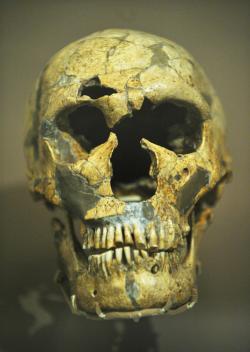![Image of tablet from Cuneiform Digital Library Initiative]() New technology has allowed researchers to come closer than ever to cracking the world’s oldest undeciphered writing system.
New technology has allowed researchers to come closer than ever to cracking the world’s oldest undeciphered writing system.
Researchers from the University of Oxford and the University of Southampton have developed a Reflectance Transformation Imaging (RTI) System for Ancient Documentary Artefacts to capture images of some of the world’s most important historical documents. Recently this system was used on objects held in the vaults of the Louvre Museum in Paris.
These images have now been made available online for free public access on the Cuneiform Digital Library Initiative website.
Among the documents are manuscripts written in the so-called proto-Elamite writing system used in ancient Iran from 3,200 to 3,000 BC and which is the oldest undeciphered writing system currently known. By viewing extremely high quality images of these documents, and by sharing them with a community of scholars worldwide, the Oxford University team hope to crack the code once and for all.
Dr Jacob Dahl, a co-leader of the Cuneiform Digital Library Initiative and a member of Oxford University’s Faculty of Oriental Studies, said: ‘I have spent the last ten years trying to decipher the proto-Elamite writing system and, with this new technology, I think we are finally on the point of making a breakthrough.
‘The quality of the images captured is incredible. And it is important to remember that you cannot decipher a writing system without having reliable images because you will, for example, overlook differences barely visible to the naked eye which may have meaning. Consider for example not being able to distinguish the letter i from the letter t.’
The reflectance transformation imaging technology system designed by staff in the Archaeological Computing Research Group and Electronics and Computer Science at the University of Southampton comprises a dome with 76 lights and a camera positioned at the top of the dome. The manuscript is placed in the centre of the dome, whereafter 76 photos are taken each with one of the 76 lights individually lit. In post-processing the 76 images are joined so that the researcher can move the light across the surface of the digital image and use the difference between light and shadow to highlight never-before-seen details. ‘We have never been able to view documents in this quality before,’ Dr Dahl explained.
Dr Dahl believes this writing system might be even more interesting than previously thought. He said: ‘Looking at contemporary and later writing systems, we would expect to see proto-Elamite use only symbols to represent things, but we think they also used a syllabary – for example ‘cat’ would not be represented by a symbol depicting the animal but by symbols for the otherwise unrelated words ‘ca’ and ‘at’.
‘Half of the signs used in this way seem to have been invented ex novo for the sounds they represent – if this turns out to be the case, it would transform fundamentally how we understand early writing where phonetecism is believed to have been developed through the so-called rebus principle (a modern example would be for example “I see you”, written with the three signs ‘eye’, the ‘sea’, and a ‘ewe’).’
Some features of the writing system are already known. The scribes had loaned–or potentially shared–some signs from/with Mesopotamia, such as the numerical signs and their systems and signs for objects like sheep, goats, cereals and some others. Nevertheless, 80-90% of the signs remain undeciphered.
The writing system died out after only a couple centuries. Dr Dahl said: ‘It was used in administration and for agricultural records but it was not used in schools – the lack of a scholarly tradition meant that a lot of mistakes were made and the writing system may eventually have become useless as an administrative system. Eventually, the system was abandoned after some two hundred years.’
Dr Dahl joked: ‘This is probably the world’s first case of a collapse of knowledge because of the under-funding of education!’
The Louvre gave the researchers access to the about 1100 proto-Elamite tablets in its collections, half of which can now be viewed on the Cuneiform Digital Library Initiative website.
![Cuneiform Digital Library Initiative]()
Dr Dahl said: ‘The Louvre collection of early writing from Mesopotamia and Iran is incredibly important – it contains the first substantial law code, the first record of a battle between kings, the first propaganda, and the first literature. Being able to put these documents online would be a great achievement.’
Dr Dahl says making important documents from early human history publicly accessible is becoming increasingly important, both as a consequence of the ever-expanding influence of cyberscholorship in academic research, but also in many cases more pressingly as a matter of cultural heritage preservation in areas of the world threatened by armed conflict and collapse of security. ‘Iraq’s cultural heritage has been pillaged in the last 20 years, and the situation in neighbouring Syria is looking dire as well.’
Source: University of Oxford
 Today marks the release for pre-order of the special edition of my paranormal-supernatural thriller, The Façade. The novel includes some ancient astronaut threads, and the sequel will pick up them as well. The special edition published by Kirkdale Press contains some great bonus content:
Today marks the release for pre-order of the special edition of my paranormal-supernatural thriller, The Façade. The novel includes some ancient astronaut threads, and the sequel will pick up them as well. The special edition published by Kirkdale Press contains some great bonus content:
 New technology has allowed researchers to come closer than ever to cracking the world’s oldest undeciphered writing system.
New technology has allowed researchers to come closer than ever to cracking the world’s oldest undeciphered writing system.





 The
The 



